 W
WAcleris quercinana is a species of moth of the family Tortricidae. It was described by Zeller in 1849. It is found in most of Europe, Asia Minor and Iran.
 W
WAgonopterix ciliella is a moth of the family Depressariidae. It is found in most of Europe, except the Iberian Peninsula, most of the Balkan Peninsula and the Benelux. It is also found in North America.
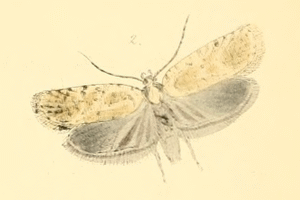 W
WAgonopterix nanatella is a moth of the family Depressariidae. It is found in most of Europe, except Fennoscandia, Poland, Ukraine, the Baltic region and most of the Balkan Peninsula.
 W
WAgonopterix subpropinquella is a moth of the family Depressariidae. It is found in most of Europe.
 W
WAmphisbatis incongruella is a moth of the family Oecophoridae. It is found in Europe.
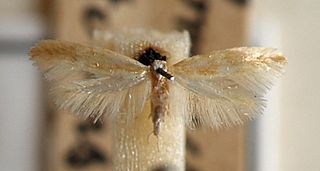 W
WArgyresthia aurulentella is a moth of the family Yponomeutidae. It is found in Northern Europe, Central Europe, western Russia and Macedonia.
 W
WArgyresthia spinosella is a moth of the family Yponomeutidae. It is found in Europe and Anatolia.
Cadra furcatella is a moth of the family Pyralidae described by Gottlieb August Wilhelm Herrich-Schäffer in 1849. It is found in southern Europe, southern Russia, Turkey, Morocco, Libya, Iran, Afghanistan, Uzbekistan, Turkmenistan, Azerbaijan and Georgia.
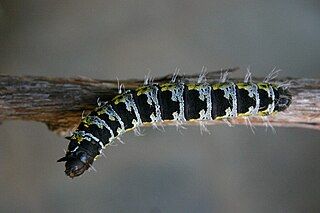 W
WCirina forda, the pallid emperor moth or shea defoliator, is a moth of the family Saturniidae. The species was first described by John O. Westwood in 1849. It is found in western Africa, including Ghana, Nigeria, Zimbabwe, the Democratic Republic of the Congo and South Africa.
 W
WClarina kotschyi, the grapevine hawkmoth, is a moth of the family Sphingidae. The species was first described by Vincenz Kollar in 1849. It is found from the Iranian plateau and Mesopotamia to eastern and central Turkey.
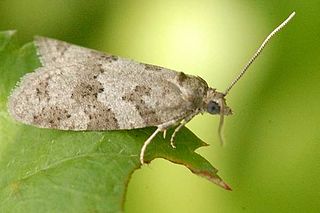 W
WCnephasia stephensiana, the grey tortrix, is a moth of the family Tortricidae. It is found in the Palearctic realm, and has also been recorded from Canada.
 W
WColeophora albitarsella is a moth of the family Coleophoridae. It is found in most of Europe, but has not been recorded from Ireland and Greece.
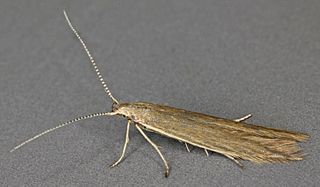 W
WColeophora alticolella is a moth of the family Coleophoridae, found in Europe and North America.
 W
WColeophora conspicuella is a moth of the family Coleophoridae found in Asia and Europe. It was first described by Philipp Christoph Zeller in 1849.
Coleophora discordella is a moth of the family Coleophoridae. It was first described by Philipp Christoph Zeller in 1849 and is found in Europe.
Coleophora ditella is a moth of the family Coleophoridae. It is found from Germany to the Iberian Peninsula, Italy and Bulgaria.
 W
WColeophora granulatella is a moth of the family Coleophoridae. It is known from most of Europe to China. It was recently reported from North America, with records from Alberta, British Columbia, Yukon, Arizona, Colorado, Michigan, Wyoming and Washington.
Coleophora ibipennella is a moth of the case-bearer family (Coleophoridae). It was first described by Philipp Christoph Zeller in 1849 and is found in Asia, Europe and North Africa. The larva feed within a pistol case on oak leaves and in the past was confused with Coleophora betulella, whose larva feed from a similar looking pistol case on birch leaves.
Coleophora lixella is a moth of the family Coleophoridae found in most of Europe. It was first described by Philipp Christoph Zeller in 1849.
Coleophora millefolii is a moth of the family Coleophoridae. It is found in most of Europe, except Great Britain, Ireland and the Iberian Peninsula.
Coleophora ochripennella is a species of moth from the family Coleophoridae. It is found from Germany and Poland to the Pyrenees, Italy and Greece.
 W
WColeophora orbitella is a moth of the family Coleophoridae. It is found from Scandinavia and northern Russia to the Pyrenees and Italy and from Ireland to Poland and Hungary.
 W
WColeophora versurella is a moth of the family Coleophoridae. It was described by Philipp Christoph Zeller in 1849.
Coleophora wockeella is a moth of the family Coleophoridae. It is found from Latvia to the Iberian Peninsula, Italy and Albania and from Great Britain to southern Russia.
 W
WDepressaria emeritella is a moth of the family Depressariidae. It is found in most of Europe. It is also found in the Near East and the eastern part of the Palearctic realm.
Depressaria libanotidella is a moth of the family Depressariidae. It is found in most of Europe, except Great Britain, Ireland, the Benelux, Portugal, Norway, Poland, most of the Balkan Peninsula and most of the Baltic region.
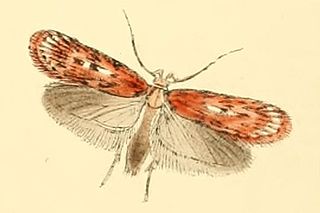 W
WDepressaria pulcherrimella is a moth of the family Depressariidae. It is found in most of Europe, except the Balkan Peninsula.
Depressaria ultimella is a moth of the family Depressariidae. It is found in most of Europe, except Spain, Norway, Finland, Lithuania, Switzerland, Italy and most of the Balkan Peninsula.
Dichomeris limosellus is a moth of the family Gelechiidae. It is found in most of Europe, except Ireland, Great Britain, Norway, the Iberian Peninsula and part of the Balkan Peninsula.
 W
WElachista apicipunctella is a moth of the family Elachistidae found in Europe. It is found in all of Europe, east into northern Russia.
 W
WElachista atricomella is a moth of the family Elachistidae that is found in Europe.
 W
WElachista kilmunella is a moth of the family Elachistidae found in Europe.
 W
WElachista regificella is a moth of the family Elachistidae, with a restricted distribution in Europe.
 W
WElachista trapeziella is a moth of the family Elachistidae found in Europe.
 W
WEriogaster arbusculae is a moth in the family Lasiocampidae first described by Christian Friedrich Freyer in 1849. It is found in parts of the Alps and mountainous areas of Fennoscandia.
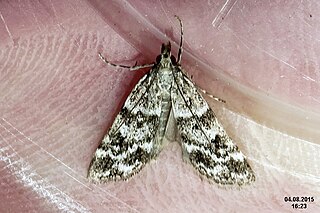 W
WEudonia delunella is a species of moth of the family Crambidae. It was described by Henry Tibbats Stainton in 1849 and is found in Europe.
 W
WEudonia truncicolella is a species of moth of the family Crambidae described by Henry Tibbats Stainton in 1849. It is found in China, Japan and Europe.
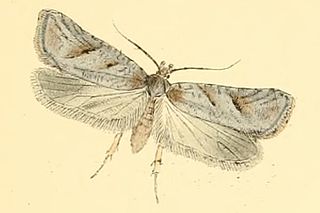 W
WExaeretia allisella is a moth of the family Depressariidae. It is found in most of northern and central Europe, Siberia, the Russian Far East, Mongolia and northern and central China.
 W
WGonimbrasia belina is a species of emperor moth which is native to the warmer parts of southern Africa. Its large edible caterpillar, known as the madora or mopane worm or amacimbi, masontja, feeds primarily but not exclusively on mopane tree leaves. Mopane worms are an important source of protein for millions in the region. The species was first described by John O. Westwood in 1849.
 W
WGraellsia isabellae, the Spanish moon moth, is in the silkmoth family Saturniidae. It is the only species in the monotypic genus Graellsia. The species was first described by Mariano de la Paz Graëlls y de la Aguera in 1849 and the genus was erected by Augustus Radcliffe Grote in 1896.
 W
WHofmannophila pseudospretella, the brown house moth, is a species of the concealer moth family (Oecophoridae), wherein it belongs to subfamily Oecophorinae. It is the only known member of its genus Hofmannophila, and as is often the case for such monotypic taxa, the genus' distinctness remains to be conclusively proven. However that may be, it seems to be a close relative of Borkhausenia.
 W
WInfurcitinea argentimaculella, the silver-barred clothes moth, is a moth of the family Tineidae. It was described by Stainton in 1849. It is found in most of Europe, except Ireland, Portugal, Latvia, Lithuania and the Balkan Peninsula.
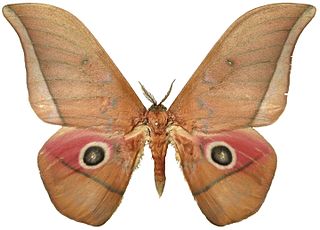 W
WLobobunaea acetes is a species of moth in the family Saturniidae first described by John O. Westwood in 1849. It is found in Angola, Cameroon, the Democratic Republic of the Congo, Guinea, Kenya, Nigeria, Rwanda, Sierra Leone, Tanzania and Uganda.
 W
WLophostethus dumolinii is a moth of the family Sphingidae. It is known from most habitats, except desert and high mountains throughout the Ethiopian Region, excluding Madagascar and the Cape in South Africa.
 W
WPammene regiana is a species of moth of the family Tortricidae. It was described by Zeller in 1849. It is found in most of Europe, except the Iberian Peninsula, most of the Balkan Peninsula, Lithuania and Ukraine.
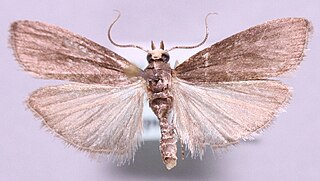 W
WSalebriopsis is a monotypic snout moth genus erected by Hans-Joachim Hannemann in 1965. Its single species, Salebriopsis albicilla, was first described by Gottlieb August Wilhelm Herrich-Schäffer in 1849. It is found in most of Europe, except Ireland, Portugal, most of the Balkan Peninsula and Ukraine.
 W
WSalebriopsis is a monotypic snout moth genus erected by Hans-Joachim Hannemann in 1965. Its single species, Salebriopsis albicilla, was first described by Gottlieb August Wilhelm Herrich-Schäffer in 1849. It is found in most of Europe, except Ireland, Portugal, most of the Balkan Peninsula and Ukraine.
Zelleria hepariella is a moth of the family Yponomeutidae. It is found in Europe and northern Asia Minor.